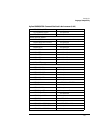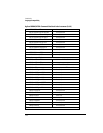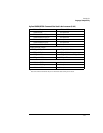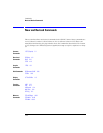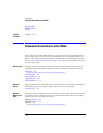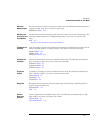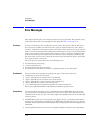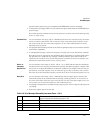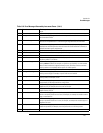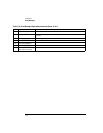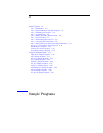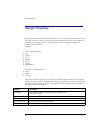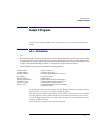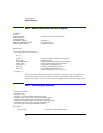
1-47
Introduction
Error Messages
specific headers and incorrect or unimplemented IEEE 488.2 common commands.
• A Group Execute Trigger (GET) was entered into the input buffer inside of an IEEE 488.2 pro-
gram message.
Events that generate command errors do not generate execution errors, instrument-specific
errors, or query errors.
Execution Error An error number in the range –200 to –299 indicates that an error was detected by the instru-
ment's execution control block. The occurrence of any error in this class causes the execu-
tion error bit (bit 4) in the event status register to be set. It also indicates that one of the
following events occurred:
• The program data following a header is outside the legal input range or is inconsistent with the
instrument's capabilities.
• A valid program message could not be properly executed due to some instrument condition.
Execution errors are reported by the instrument after expressions are evaluated and round-
ing operations are completed. For example, rounding a numeric data element will not be
reported as an execution error. Events that generate execution errors do not generate com-
mand errors, instrument specific errors, or query errors.
Device- or
Instrument-
Specific Error
An error number in the range of –300 to –399 or +1 to +32767 indicates that the instrument
has detected an error caused by an instrument operation that did not properly complete. This
may be due to an abnormal hardware or firmware condition. For example, this error may be
generated by a self-test response error, or a full error queue. The occurrence of any error in
this class causes the instrument-specific error bit (bit 3) in the event status register to be set.
Query Error An error number in the range –400 to –499 indicates that the output queue control of the
instrument has detected a problem with the message exchange protocol. An occurrence of
any error in this class causes the query error bit (bit 2) in the event status register to be set.
An occurrence of an error also means one of the following is true:
• An attempt is being made to read data from the output queue when no output is either present
or pending.
• Data in the output queue has been lost.
Table 1-10. Error Messages Returned by Instrument Parser (1 of 4)
0 No error The error queue is empty. Every error in the queue has been read (SYSTEM:ERROR?
query) or the queue was cleared by power-up or *CLS.
-100 Command error This is the generic syntax error used if the instrument cannot detect more specific errors.
-101 Invalid character A syntactic element contains a character that is invalid for that type.
-102 Syntax error An unrecognized command or data type was encountered.
-103 Invalid separator The parser was expecting a separator and encountered an illegal character.



